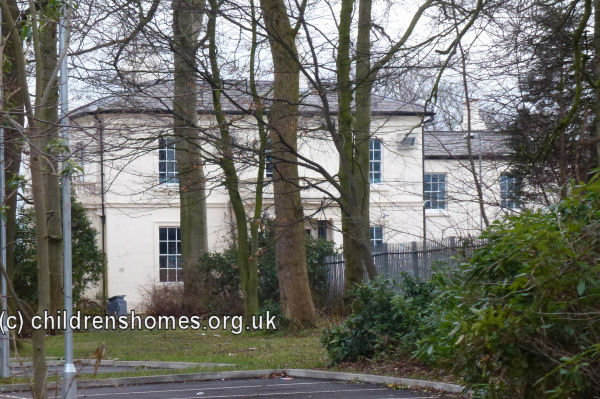Bishop O'Reilly Memorial / Liverpool Diocesan Poor Law Schools, Liverpool, Lancashire
The Bishop O'Reilly Memorial School was opened in 1894 at Honey's Green Lane, Leyfield, West Derby, Liverpool. It was named in memory of the recently deceased Roman Catholic Bishop of Liverpool, Bernard O'Reilly, and was run by the Daughters of Charity of St Vincent de Paul.
The main role of the School, which was also known as the Liverpool Diocesan Poor Law School, was to receive Catholic children from within the Liverpool Diocese who might otherwise be living in workhouse accommodation. To this end, the establishment was formally accredited as a Certified School on 23rd November, 1894. The premises initially accommodated up to 192 children, aged over 7 years at their date of admission.
The official opening of the School was carried out on December 13th, 1894, by the Bishop of Liverpool, Dr Whiteside. A report of the occasion recorded:
Following the opening in 1896 of the boys' Diocesan School at Preston, also dedicated to Bishop O'Reilly, the Leyfield establishment became primarily a girls' institution, although it did admit boys up to the age of 7.
A report on a visit to the school in around 1906 noted:
These are certified schools for 350 boys under eight years of age, and for girls up to the age of leaving school; for the latter places are found as domestic servants.
The whole atmosphere of' the institution seemed bright and healthy, although it was distinctly a barrack school. It was a remarkable fact that only one child out of the 350 was ill.
It is managed by a Teaching Order of Sisters, who seemed very zealous and capable. They receive children from sixteen Poor Law Unions, and very few non-Poor Law children are taken.
By 1912, the construction of further buildings at Leyfield had increased the total number of places to 350.
As suggested in the 1894 report, the old house on the site, Leyfield House, was indeed converted for use as an infirmary.

Former St Vincent's Working Boys' Home, Deepdale Road, Preston, 2013. © Peter Higginbotham
In 1956, the Daughters of Charity withdrew from the establishment and took over the running of the St Catherine's Orphanage for Girls at Druid's Cross.
Also in 1856, Leyfield School as it had by then become known, provided temporary accommodation for a number of refugees who had fled from the political unrest in Hungary.
In 1958 the site was renamed the Cardinal Allen School and in 1983 became the Cardinal Heenan High School.
The school was almost totally rebuilt in 2011 and is now known as the Cardinal Heenan Catholic Sports College.
Records
Note: many repositories impose a closure period of up to 100 years for records identifying individuals. Before travelling a long distance, always check that the records you want to consult will be available.
- Daughters Of Charity Of St Vincent De Paul, Provincial House, The Ridgeway, Mill Hill, London NW7 1RE. (Archivist: Sister Bernadette Ryder DC) Has Birth and Baptismal Register and notes.
Bibliography
- Certified Schools page on this website.
Links
Except where indicated, this page () © Peter Higginbotham. Contents may not be reproduced without permission.


